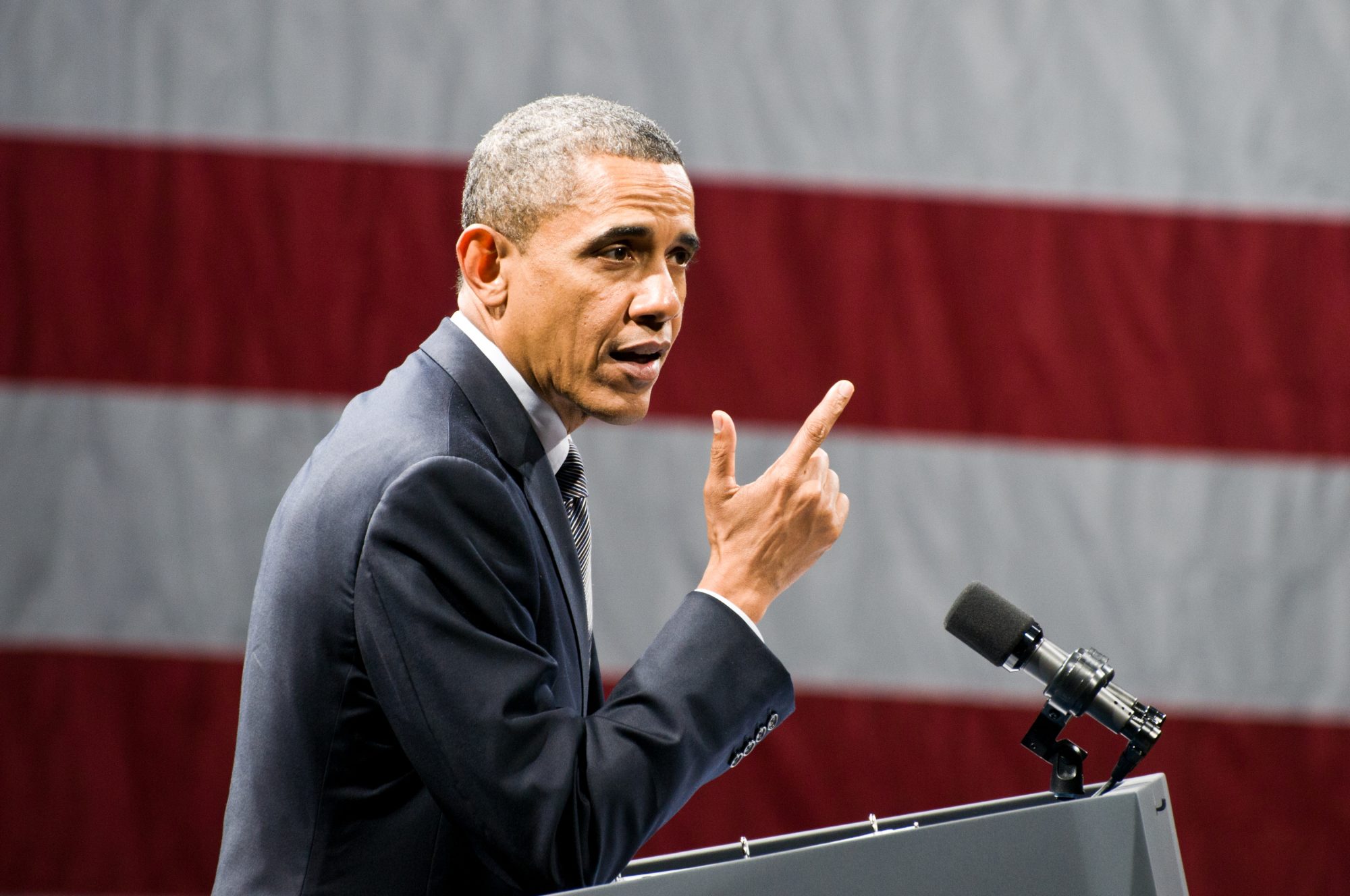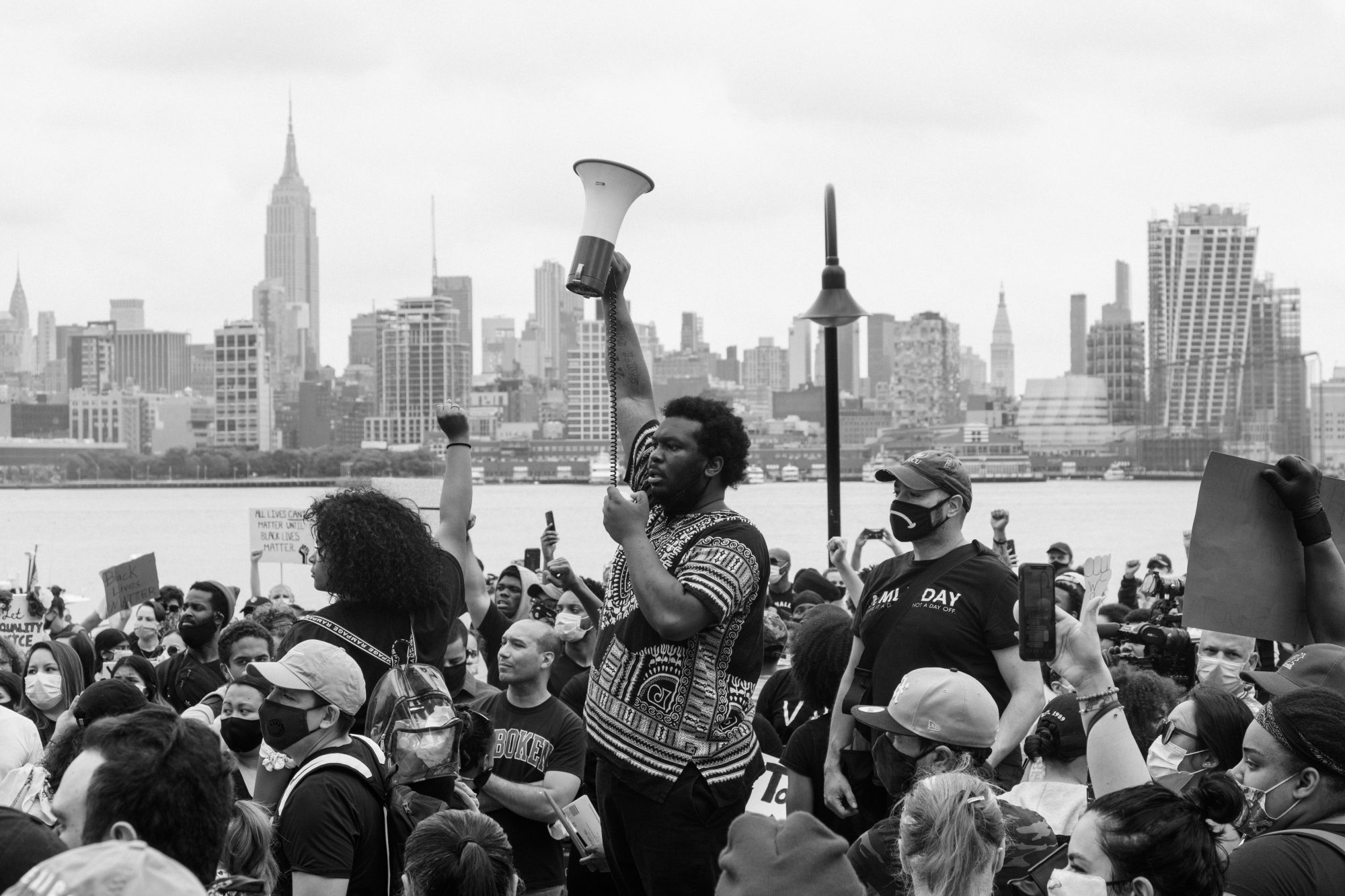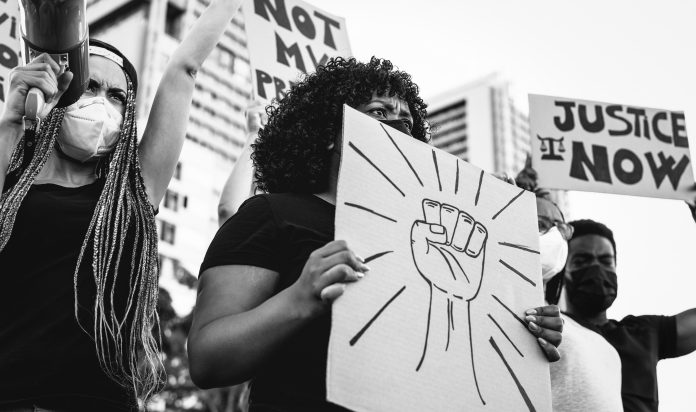Dr Monia Dal Checco, specialist in contemporary African American literature, discusses the power of Black activism via #BlackLivesMatter
In a story making international headlines, two Facebook employees resigned and many others staged a virtual walkout over CEO Mark Zuckerberg’s handling of Donald Trump’s post of May 28, stating that “when the looting starts, the shooting starts.”
The quote was originally pronounced by Walter E. Haedley, police chief of Miami, in response to the 1968 Miami protests, initiated by a union of several Black organisations protesting over the unfair political, social and economic treatment of African American citizens. The quote was appropriated by Trump to refer to the treatment he expected to reserve to participants in protests over the death of George Floyd, adding that he would send the National Guard to “get the job done right.”
Trump’s tweet was flagged by Twitter for glorifying violence, but Facebook’s CEO decided against removing or flagging the post, invoking freedom of speech and stating that the quote did not cause “imminent risk of specific harms or dangers.”
….These THUGS are dishonoring the memory of George Floyd, and I won’t let that happen. Just spoke to Governor Tim Walz and told him that the Military is with him all the way. Any difficulty and we will assume control but, when the looting starts, the shooting starts. Thank you!
— Donald J. Trump (@realDonaldTrump) May 29, 2020
This is just one example of how social media are becoming instrumental in fostering or repressing a new wave of Black activism. On the one hand, social media give voice to groups that, in previous decades, have been given little space by mainstream media. They also allow activists to come together and get organised quickly and efficiently – suffice it to say that the phrase “Black Lives Matter,” coined as a hashtag in response to the death of 17 year-old Trayvon Martin in 2012, quickly grew into a global movement for racial justice.
On the other hand, the concise, simplified, sloganised language of social media, together with their potential to give voice to the writer’s sentiments with little to no mediation, have made them a powerful tool for the spread of hate speech and incitement to racial hatred.
So, how is contemporary Black activism reshaping its strategy in a world where much of our communication passes through digital media, and where everything can be documented and shared online in real-time?
The contemporary context for Black activism
It’s not just social media that are revolutionising the strategy and agenda of Black activism. The contemporary context is marked by another important phenomenon – the complete disillusion with the concept of post-racialism.
The election of former president Barack Hussein Obama in 2008 had contributed to the popularity of the much-debated concept of “post-raciality,” the theory according to which the United States had finally moved beyond the implications of race. The election to the White House of a Black man was in fact seen by many as the ultimate affirmation of the American Dream of equality, democracy, and upward social mobility through meritocracy.

The expectation that Obama’s election would mark the end of racial discrimination might seem naïve, but is easily explained when we think in the US, the public imagination has typically associated each charismatic Black male leader to a moment or event of particular relevance to the country’s race relations. For example, Frederick Douglass is remembered as instrumental in the abolition of slavery, while Martin Luther King, Jr. and Malcolm X are associated with the victories of the Civil Rights and Black Power movements and the end of legal racial segregation.
Obama has been identified as the man who was supposed to usher the country into a new era in which race does not affect the wellbeing of individuals and communities: The end of de facto discrimination.
Black communities continue to live in “the afterlife of slavery”
Twelve years after Obama’s election, it is clear that, to quote cultural historian Saidiya Hartman, Black communities continue to live in “the afterlife of slavery,” since many aspects of their lives, from access to healthcare and education to treatment in the criminal justice system, are heavily influenced by the imbalance in power relations that originated in slavery times.
The most dramatic evidence of the contemporary legacy of slavery is in the well documented racial disparities in the criminal justice system and in the frequent reports of violent interactions between the police and non-white citizens. Many activists and scholars have denounced police brutality as a form of social control similar to that enacted by plantation overseers and slave patrols in slavery times, and later on by the Ku Klux Klan and its affiliates.
Indeed, in a social context where slavery and racial segregation are illegal, racial discrimination often operates in a more subtle, but equally pernicious way, and infiltrates social, economic and political institutions.
The challenges facing Black people in America, right now
The problem with institutional racism and de facto discrimination is that they are harder to expose because they are not as explicit as previous forms of racial subjugation. While episodes of blatant racism, such as the murder of George Floyd on May 25, are still far from uncommon, other manifestations of racism may be less obvious and more difficult to fight. Microaggressions, glass ceilings that prevent social mobility, redlining designed to keep certain social groups out of some neighbourhoods and services: these are forms of so-called “new racism.”

In this social context, Black activism is updating its agenda, reshaping a strategic approach that had been developed more than 50 years ago in the context of the Civil Right and Black Power Movements.
Today, Black activists and their supporters deliberately focus on creating more participatory grassroots movements that don’t depend on a strong figure of leadership, but on the involvement of a community that gives space to a plurality of voices. The protests sparked by the killing of George Floyd, and before him Trayvon Martin, Michael Brown, Eric Garner, Philando Castile and countless other African Americans who have died at the hands of the police, have managed to mobilise activists from many different backgrounds and give space to a plurality of voices, even those that were traditionally silenced in the context of the Civil Rights Movement.
LGBTQ people, for example, have been front and centre of contemporary black activism.
LGBTQ people, for example, have been front and centre of contemporary Black activism. #BLM was founded by three Black women, Alicia Garza, Patrisse Khan-Cullors and Opal Tometi, two of whom identify as queer, proving that contemporary activism is characterised by a more inclusive approach and by the rejection of every form of discrimination based not only on race, but also on gender, sexuality, class, religion, age and physical condition.
#BlackLivesMatter movement was founded July 13, 2013, 7 years ago as result of the acquittal of the person who shot & killed my son,#TrayvonMartin. I am so appreciative to the phenomenal women who started it all #AliciaGarza, #PatrisseCullors, & #OpalTometi for their resilience!! pic.twitter.com/RCETkbNXeN
— Sybrina Fulton (@SybrinaFulton) July 13, 2020
In other words, contemporary Black activism is guided by the principle that racial discrimination cannot be effectively dismantled unless other forms of discrimination are tackled as well.
The re-imagined power of visual culture
#BLM activists differ from the previous generations both in their ideals and in the strategies used to achieve their goals. Thanks to social media, activists can now reach millions of people in milliseconds, stirring the public conscience and bringing people together faster than even before.
Using photos and actual footage to elicit a response from the public opinion is not a new strategy in itself. Pictures documenting the horrors of slavery were already circulated by the abolitionist movement – a famous example being the photo of slave Gordon’s back, scarred by repeated whippings, which was widely distributed by the abolitionists in the second half of the 19th century and later reprinted by Harper’s Weekly.
Images and footage played an equally important role in the abolitionist movement. Television allowed a broad and fast circulation of images, and civil rights activists were aware of the power of the new medium to document racism, as well as to project a positive and respectable image of Black communities.
This had a strong impact on how activists were trained. For example, activists at sit-ins and marches were taught to not respond to provocations, and images of respectable Black citizens wearing their best church clothes and protesting peacefully despite the violence perpetrated against them by white mobs were broadcasted quickly and caused outrage in the US and internationally.
There is ample evidence that Black activism in all its phases has always been aware of the importance of using mass media strategically. But what is new in the era of social media is not only the speed at which images circulate, but most importantly the accessibility of this technology. Anybody can actively participate in taking and spreading images, in a participatory act that has created a huge archive of material documenting the consequences of institutional racism.
Human rights vs civil rights
Another trait that differentiates #BLM from previous phases of Black activism is the group’s focus on the human treatment of Black citizens over a more specific concern for political and civil rights.
The affirmation that Black lives matter, as self-evident as it may seem, actually aims at drawing people’s attention towards the fragility of those lives, threatened by the same power dynamics that subjugated Black people during times of slavery. In fact, #BLM has been vocal in denouncing how the main problems that the Black community is facing – police brutality and mass incarceration – derive directly from the institution of slavery.
Real transformation starts with reinvesting in our communities. Share our newest graphic to show people what it looks like to #DefundPolice. #BlackLivesMatter pic.twitter.com/3jfsn4gDqU
— Black Lives Matter (@Blklivesmatter) June 29, 2020
#BLM activists have denounced how the situation of many impoverished Black and Latinx communities resembles slavery in several ways. The group has repeatedly emphasised that a disproportionate number of citizens in these communities are not in a condition to access basic services, such as affordable healthcare, safe housing and good education, a situation which leads people driven by lack of opportunities to commit petty crimes for which they receive harsher sentences than offenders coming from affluent communities.
the free labour of Black inmates generates an income
Scholars have pointed out that the free labour of Black inmates generates an income that makes the prison industrial complex a profitable machine, so that the value of Black lives in financial terms, not in human terms, is as high as in slavery times. The criminalisation of poverty and lack of resources has therefore effectively replaced slavery and segregation as a means to perpetuate white privilege in a post-Civil Rights society.
#BLM’s insistence on protecting Black lives, criticised by those who advocate that all lives matter, is therefore easily explained in the light of a long tradition of devaluing Black lives, not all lives, in American society.
The killing of George Floyd is just one more example of the fact that Black lives continue to be vulnerable to racially motivated violence, and American institutions are proving not only unable and unwilling to fully protect them, but actually complicit in the violence perpetrated against them.











